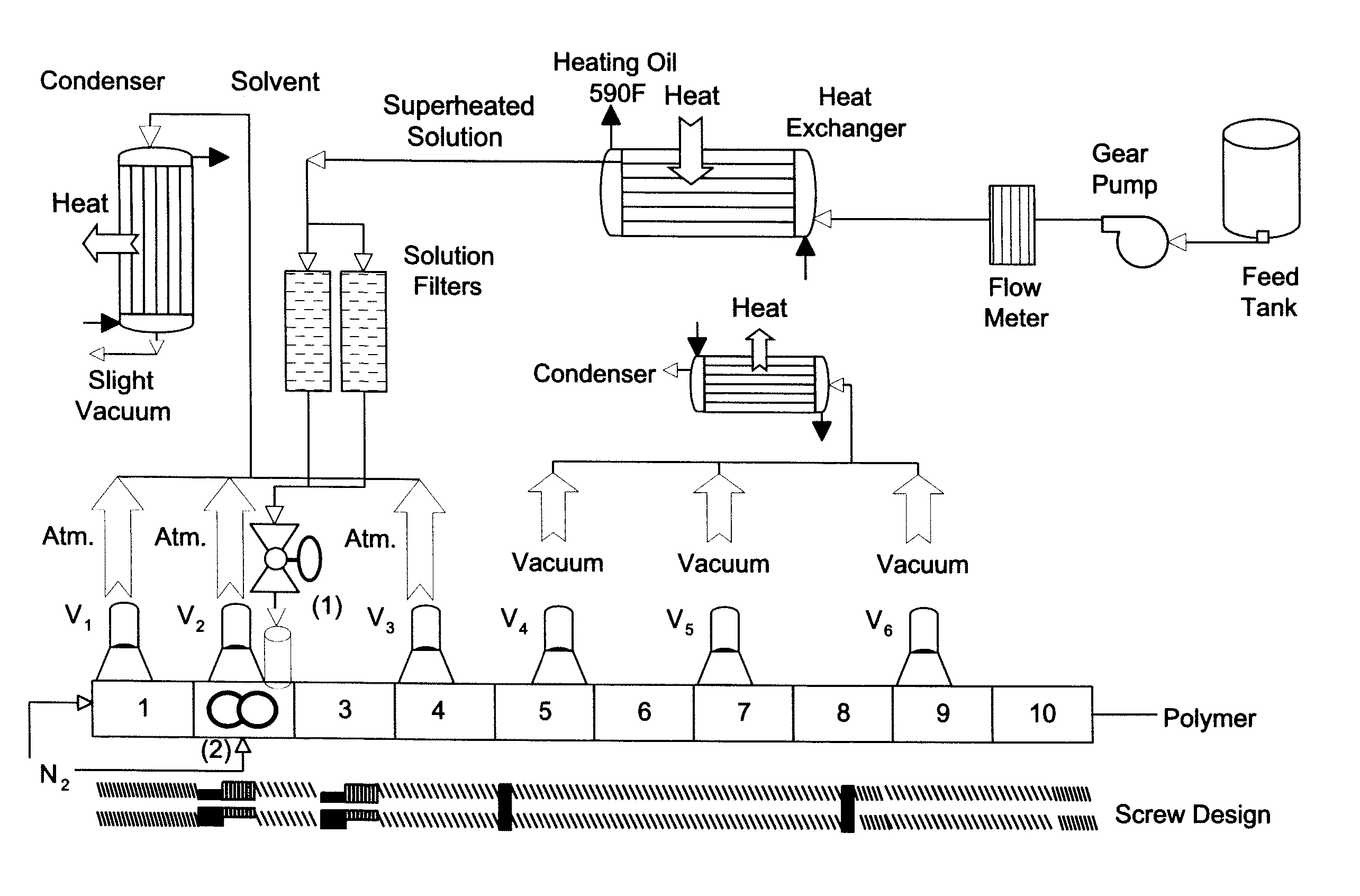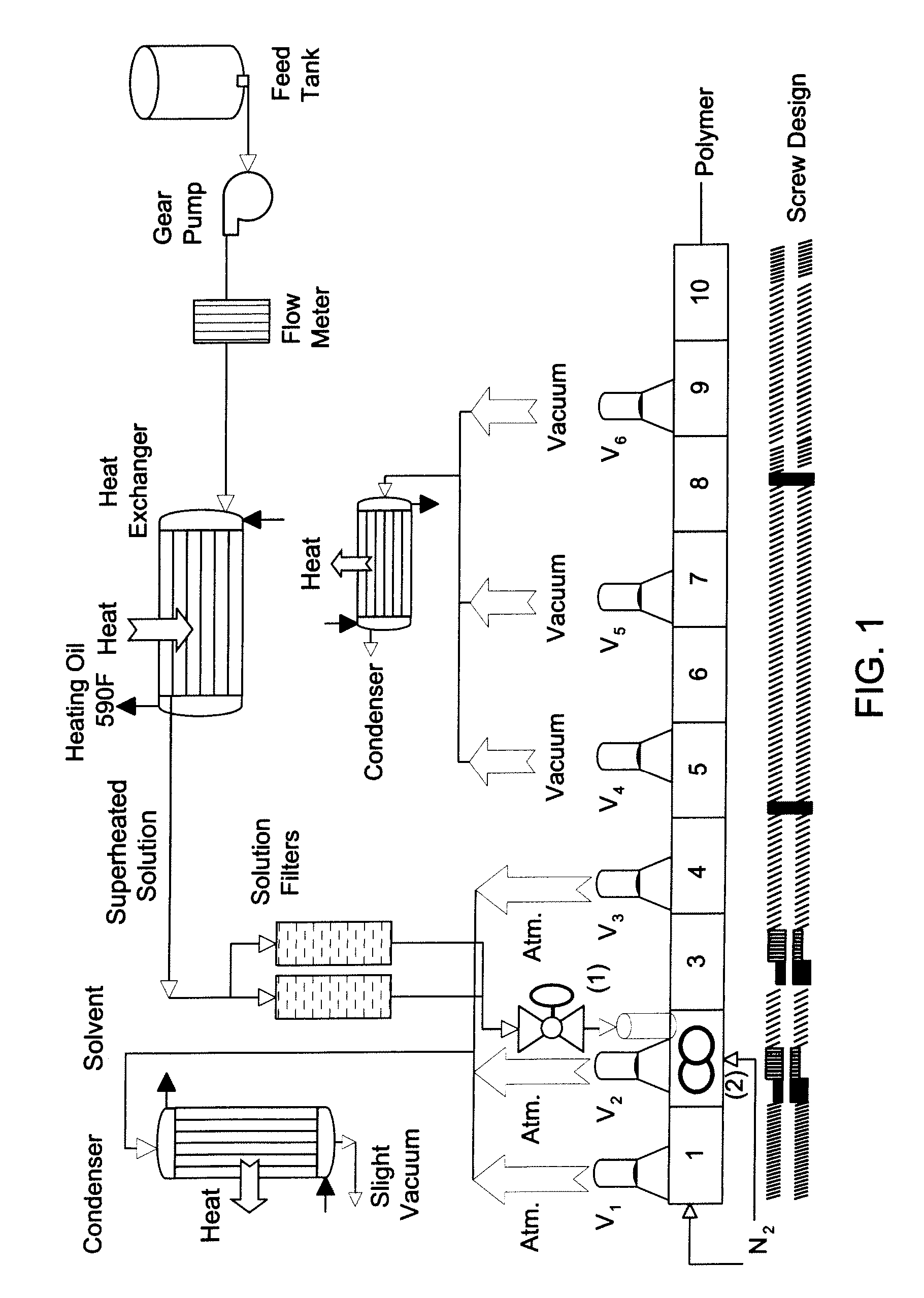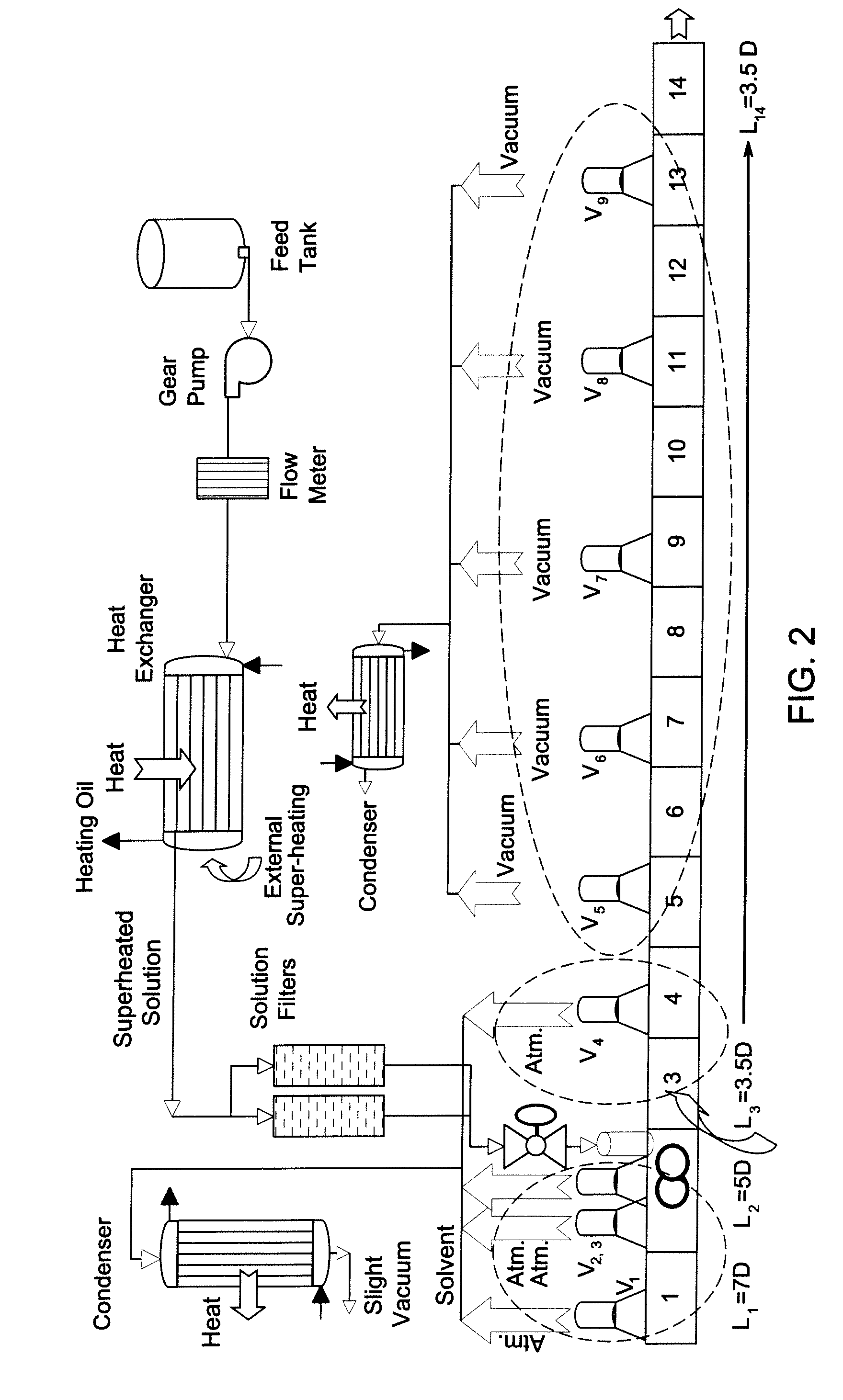Method of separating a polymer from a solvent
a polymer composition and solvent technology, applied in chemical/physical/physical/physical-chemical stationary reactors, chemical/physical processes, chemical/physical/physical processes, etc., can solve the problems of general inability to predict and select the operating conditions to be used, and reduce the solvent content in the polymer composition to parts per million levels. , to achieve the effect of simple and yet elegant solutions
- Summary
- Abstract
- Description
- Claims
- Application Information
AI Technical Summary
Benefits of technology
Problems solved by technology
Method used
Image
Examples
examples
[0049] The following examples are set forth to provide those of ordinary skill in the art with a detailed description of how the methods claimed herein are carried out and evaluated, and are not intended to limit the scope of what the inventors regard as their invention. Unless indicated otherwise, parts are by weight and temperature is in degrees centigrade (° C.).
[0050] Molecular weights are reported as number average (Mn) or weight average (Mw) molecular weight and were determined by gel permeation chromatography (GPC) using polystyrene (PS) molecular weight standards.
examples 1-9
Determination of Devolatilization Performance Ratios Correlating with Residual Solvent Concentration for a Laboratory Scale Devolatilizing Extruder
[0051] A polymer-solvent mixture containing about 30 percent by weight polyetherimide (ULTEM® 1010 polyetherimide; prepared by the nitro-displacement process; commercially available from GE Plastics, MT Vernon, Ind.) and about 70 percent by weight ODCB was prepared and heated to a temperature of 150 to 160° C. in a feed tank under a nitrogen atmosphere at a pressure of about 100 psi. Approximately 180 pounds of the polymer-solvent mixture was fed to the extruder over the course of nine experiments constituting Examples 1-9 shown in Table 1 which were carried out over a two and a half hour period without interruption.
[0052] The devolatilizing extruder and associated attachments employed was analogous to that shown schematically in FIG. 1. The polymer-solvent mixture was fed continuously from a heated feed tank by means of a gear pump via ...
examples 10-14
Determination of Devolatilization Performance Ratios Correlating with Residual Solvent Concentration for a Pilot Scale Devolatilizing Extruder
[0058] A polymer-solvent mixture containing about 33.1 percent by weight polyetherimide (ULTEM® 1010 polyetherimide; prepared by the nitro-displacement process: commercially available from GE Plastics, MT Vernon, Ind.) and about 66.9 percent by weight ODCB was prepared and heated to a temperature of 150 to 160° C. in a feed tank under a nitrogen atmosphere. The system used to introduce the polymer-solvent mixture as a superheated solution was analogous to that used in Examples 1-9. The polymer-solvent mixture was fed to the pilot scale extruder over the course of five experiments constituting Examples 10-14 in Table 4 at a feed rate in rates a range from about 370 to about 950 pounds per hour of the polymer-solvent mixture. The pilot scale devolatilizing extruder and associated attachments employed was analogous to that shown schematically in ...
PUM
| Property | Measurement | Unit |
|---|---|---|
| Length | aaaaa | aaaaa |
| Length | aaaaa | aaaaa |
| Length | aaaaa | aaaaa |
Abstract
Description
Claims
Application Information
 Login to View More
Login to View More - R&D
- Intellectual Property
- Life Sciences
- Materials
- Tech Scout
- Unparalleled Data Quality
- Higher Quality Content
- 60% Fewer Hallucinations
Browse by: Latest US Patents, China's latest patents, Technical Efficacy Thesaurus, Application Domain, Technology Topic, Popular Technical Reports.
© 2025 PatSnap. All rights reserved.Legal|Privacy policy|Modern Slavery Act Transparency Statement|Sitemap|About US| Contact US: help@patsnap.com



